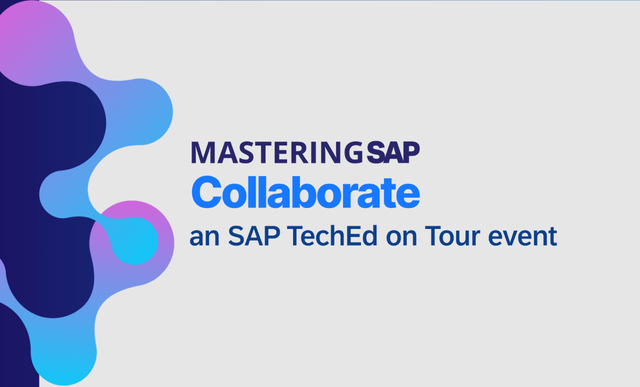SAP Asset Management
Filter By
Browse By
- SAP Analytics and AI
- SAP Application Development and Integration
- All SAP Application Development and Integration
- SAP ABAP
- SAP ABAP Development Tools
- SAP ABAP Test Cockpit
- SAP API Management
- SAP BAPI
- SAP Basis
- SAP BRF
- SAP Business Application Studio
- SAP CMS
- SAP Design Studio
- SAP Development Tools
- SAP DevOps
- SAP EAI
- SAP EDI
- SAP Extension Suite
- SAP Fiori
- SAP Fiori Elements
- SAP Integration Suite
- SAP Low Code Application Development
- SAP Low Code Automation
- SAP Netweaver
- SAP Release Management
- SAP UI5
- SAP Web Application Server
- SAP Web IDE
- SAP Business Process Management
- SAP Center of Excellence
- SAP CIO
- SAP Customer Experience
- SAP Data and Data Management
- All SAP Data and Data Management
- SAP BW
- SAP BW/4HANA
- SAP Crystal Reports
- SAP Data Archiving
- SAP Data Center
- SAP Data Governance
- SAP Data Integration
- SAP Data Migration
- SAP Data Quality
- SAP Data Services
- SAP Data Strategy
- SAP Data Visualization
- SAP Data Warehouse Cloud
- SAP DMS
- SAP Document Control
- SAP EIM
- SAP ETL
- SAP ETL Tools
- SAP HANA
- SAP HANA Administration
- SAP HANA Deployment Infrastructure
- SAP HANA Studio
- SAP Master Data
- SAP Master Data Governance
- SAP MDM
- SAP Enterprise Architect
- SAP Enterprise Asset Management
- SAP ERP
- SAP Finance
- All SAP Finance
- SAP Accounting
- SAP AR AP
- SAP Asset Accounting
- SAP Billing Systems
- SAP BPC
- SAP BRIM
- SAP Cash Management
- SAP Central Finance
- SAP Controlling
- SAP COPA
- SAP Cost Center Accounting
- SAP Currency Risk
- SAP e-invoicing
- SAP FICO
- SAP Finance Automation
- SAP Advanced Financial Closing
- SAP Financial Consolidation
- SAP Financial Planning
- SAP FX Risk
- SAP General Ledger
- SAP Global Tax Management
- SAP Hyperion
- SAP Order to Cash
- SAP Payment Processing
- SAP Profitability Analysis
- SAP Rebate Management
- SAP S/4HANA Finance
- SAP SWIFT Compliance
- SAP Treasury Management
- SAP Universal Journal
- SAP Governance Risk and Compliance
- SAP Human Capital Management
- SAP Intelligent Technologies
- SAP Platform and Technology
- All SAP Platform and Technology
- SAP Business Technology Platform
- SAP Cloud
- SAP Cloud Connector
- SAP Cloud Integration Platform
- SAP Cloud Migration
- SAP Cloud Platform
- SAP Cloud Providers
- SAP Cloud Strategy
- SAP Digital Signature
- SAP Container Platform
- SAP HANA Enterprise Cloud
- SAP Digital Asset Management
- SAP Smart Forms
- SAP HEC
- SAP Digital Integration Hub
- SAP Hyperscalers
- SAP Infrastructure
- SAP Messaging
- SAP Quality and Testing
- SAP Security
- SAP Spend Management
- SAP Supply Chain Management
- All SAP Supply Chain Management
- SAP APO
- SAP Asset Management
- SAP Business Network
- SAP Digital Manufacturing Cloud
- SAP Digital Twin
- SAP EWM
- SAP IBP
- SAP Inventory Management
- SAP Label Printing
- SAP Logistics
- SAP Manufacturing
- SAP Manufacturing Automation
- SAP MES
- SAP MII
- SAP MM
- SAP MRO
- SAP MRP
- SAP Order Management
- SAP Plant Maintenance
- SAP PLM
- SAP Production Planning
- SAP S&OP
- SAP SD
- SAP SPM
- SAP Supply Chain Planning
- SAP Track and Trace
- SAP Transportation Management
- SAP System Administration
What is Enterprise Asset Management?
Enterprise asset management (EAM) focuses on managing the maintenance of an organization’s physical assets throughout their lifecycle. Technology now plays a greater and more critical role in this endeavor as asset downtime can lead to significant revenue and brand repercussions.
SAP Intelligent Asset Management
SAP offers SAP Intelligent Asset Management, a group of solutions that “enable an organization to use sensor technologies and predictive analytics to improve asset health.” The four solutions and some of their capabilities include:
What is Enterprise Asset Management?
Enterprise asset management (EAM) focuses on managing the maintenance of an organization’s physical assets throughout their lifecycle. Technology now plays a greater and more critical role in this endeavor as asset downtime can lead to significant revenue and brand repercussions.
SAP Intelligent Asset Management
SAP offers SAP Intelligent Asset Management, a group of solutions that “enable an organization to use sensor technologies and predictive analytics to improve asset health.” The four solutions and some of their capabilities include:
- SAP Asset Intelligence Network
— Collaborative EAM
— Automated equipment tracking
- SAP Predictive Asset Insights
— 360-degree view of assets
— Advanced predictive analytics
- SAP Mobile Asset Management
— Work order management
— Cloud-based deployment
- SAP Asset Strategy and Performance Management
— Asset information management
— Failure modes and effects analysis
Apply Industry 4.0 technologies for advanced enterprise asset management execution. Sources cite the increased use of artificial intelligence and machine learning in EAM applications to better automate and predict maintenance events. Through data analysis, companies can glean predictions and recommendations that provide greater insights for EAM decision making. Through the use of the cloud, companies can more accurately track their assets and assess their conditions in real time.
Consider vendor consignment for your EAM spare parts procurement strategy. Vendor consignment enables an organization to hold inventory in its warehouse without paying the vendor until it’s consumed. What are the advantages of this strategy? In the case of spare parts for physical assets, it allows for a reduction in the company’s own inventory stock while creating fewer steps in the procure-to-pay process. Read this articleto gain a full understanding of setting up vendor consignment as part of EAM for spare parts in SAP ERP Central Component (SAP ECC).
Implement a robust EAM strategy for fleet maintenance to ensure availability and reliability. For many companies, fleet management is critical for servicing customers and meeting their expectations. For example, SBB AG, the national railway company of Switzerland, required a powerful solution to optimize the maintenance of its rail fleet. The company implemented SAP’s Intelligent Asset Management solutions that enabled real-time monitoring of tracks and rail cars for a “reliability centered” approach to its maintenance process.
398 results
-

 Premium
Premium
Leveraging Smart Grid and AMI Using SAP Application Suites
Reading time: 23 mins
Discover how to administer and use smart grid, advanced metering infrastructure, and smart meters to improve consumer experience and optimize associated energy and operational costs. Gain an understanding of the fundamentals, application, and impact of these emerging technologies and how the SAP Business Suite helps deploy and leverage the value they provide. Key Concept Smart...…
-

Cognizant Partners with AWS to Empower the Digital Factory and Enhance Smart Manufacturing
Reading time: 4 mins
Cognizant has partnered with AWS to enhance smart manufacturing capabilities for global clients by leveraging IoT, AI, and cloud technologies to address supply chain complexities and improve operational efficiency. Membership Required You must be a member to access this content.View Membership LevelsAlready a member? Log in here
-

- SAP Asset Accounting
 Premium
Premium
How to Set Up Parallel Asset Accounting in SAP S/4HANA Finance with Differing Fiscal Year Variants
Reading time: 12 mins
Learn how to set up the new Asset Accounting functionality (FI-AA) in SAP S/4HANA Finance in a parallel reporting scenario with differing fiscal year variants. Key Concept The unified data model and real-time integration between General Ledger Accounting (FI-GL) and Asset Accounting (FI-AA) force the fiscal year variants from the leading and non-leading ledgers onto...…
-
-

- SAP Asset Management
 Premium
Premium
Closed-Loop Asset Management with SAP: Increase Uptime, Reduce Cost, and Improve Asset Performance by Learning from Work Execution
Understand how SAP has re-engineered its Intelligent Asset Management solutions to enable a closed-loop process, which directly links your maintenance strategy from asset criticality assessment with maintenance planning and work execution – and enables you to apply learnings from your work execution to improve your asset strategies. Membership Required You must be a member to…
-

 Premium
Premium
How Proposed Lease Accounting Changes Will Affect Your SAP System (And What You Can Do About It)
Reading time: 6 mins
ManagementSAPexperts/FinancialsWhile the switch to International Financial Reporting Standards (IFRS) is getting all the attention, the two boards that govern US and international accounting rules are mulling another change that could have a big impact on businesses that lease equipment. If passed, the proposal could add significant complexity to the way leases are accounted for at...…
-

 Premium
Premium
Maintain an Asset Hierarchy Using the Plant Information Catalog in SAP MII
Reading time: 34 mins
Learn how to create, maintain, and consume a Plant Information Catalog (PIC) hierarchy in SAP Manufacturing Integration and Intelligence (SAP MII). Discover how to integrate shop floor data and enterprise data from SAP ERP in the PIC. Key Concept Plant Information Catalog (PIC) is a framework provided by SAP Manufacturing Integration and Intelligence (SAP MII)...…
-

- SAP Business Application Studio
 Premium
Premium
Integrate Your SAP Data into SAP BusinessObjects Planning and Consolidation
Reading time: 26 mins
The purpose and the semantics of transaction level data in SAP ERP can differ significantly from what business users expect to see in SAP BusinessObjects Planning and Consolidation when they perform their forecasting and consolidation activities. Taking these differences into account when integrating data into SAP BusinessObjects Planning and Consolidation is often more complex than...…
-
-

Where Splunk’s Asset and Risk Intelligence can help in an SAP environment
Reading time: 1 mins
Splunk’s Asset and Risk Intelligence tool helps modern SAP enterprises manage and secure a complex array of systems and IoT devices by providing continuous asset tracking and compliance insights, thereby enhancing cybersecurity and operational effectiveness.
-

 Premium
Premium
Access Asset Accounting Customizing with One Transaction Code by Bringing Back ORFA
Reading time: 8 mins
Transaction code ORFA used to be the preferred method of directly accessing the asset subledger for customizing. In R/3 4.6, ORFA functionality is still there, but hidden. This article explains how to make it active again. R/3 used to offer a way for you to access FI’s Asset Accounting customizing with a single transaction code,...…
-

 Premium
Premium
Tackle Changes to Inventory, Cash Flow, and Benefit Regulations with SAP ERP
Reading time: 14 mins
Review some accounting standard changes, including changes to foreign exchange rates, inventory, and benefits, and see how the SAP ERP system can address them. Key Concept The driver of International Financial Reporting Standards (IFRS) and International Accounting Standards (IAS) is the need to bring uniformity and consistency to accounting practices and reporting across the globe....…
Become a Member
Unlimited access to thousands of resources for SAP-specific expertise that can only be found here.
Become a Partner
Access exclusive SAP insights, expert marketing strategies, and high-value services including research reports, webinars, and buyers' guides, all designed to boost your campaign ROI by up to 50% within the SAP ecosystem.
Upcoming Events
-

Mastering SAP Collaborate, an SAP TechEd on Tour event
November 12 - 14, 2025
Sydney, New South Wales
Australia
View Event
Related Vendors
Your request has been successfully sent

